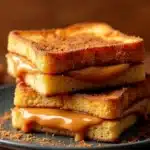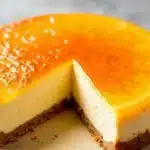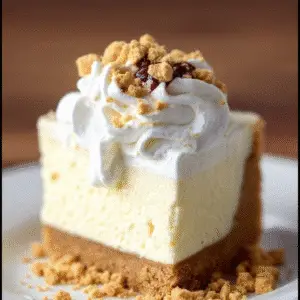If you’re searching for the ultimate fresh lemon dessert, let me tell you—this Pioneer Woman Lemon Cake recipe is about to become your new favorite! The very first time I made this cake, the scent of zesty lemons filled my whole kitchen. There’s just something magical about the way tangy citrus pairs with sweet, buttery cake. Every slice is bursting with sunshine, you know? Honestly, this dessert is worth making for the aroma alone! But, of course, it’s the taste that keeps everyone coming back for seconds (or thirds… no judgment here!). Whether you’re hosting a spring brunch, celebrating a birthday, or just craving a slice of something bright, this lemon cake fits the bill. I’ve always had a soft spot for lemon desserts, and there’s a reason this one stands out. It’s simple to put together, uses basic pantry staples, and the result is a showstopper every time. Plus, there’s a little history to this recipe that makes it even more special—did you know lemon cakes have been beloved at tea parties since the Victorian era? There’s just something timeless about this classic flavor combo. So, let’s roll up our sleeves and bring a little old-fashioned joy to your kitchen. Trust me, once you taste this Pioneer Woman Lemon Cake, you’ll want to make it again and again!
Why You Will Love This Pioneer Woman Lemon Cake Recipe
Lemon cakes have been a staple in Southern kitchens for generations. The Pioneer Woman Lemon Cake recipe brings together that sweet Southern charm and a punch of fresh, tart lemon flavor. My grandma used to make lemon cakes every Sunday for our family dinners—she’d zest the lemons by hand and squeeze them over the bowl, filling the house with that unmistakable citrus perfume. So, every time I bake this cake, it’s like a warm hug from my childhood. Over the years, the recipe evolved in our family, sometimes with a swirl of cream cheese frosting, other times with just a dusting of powdered sugar. The Pioneer Woman’s version keeps things simple but oh-so-delicious.
This cake is especially perfect in spring and summer when lemons are at their juiciest. But honestly, it brightens up gloomy winter days, too! The recipe itself is inspired by classic Southern lemon cakes, but it’s adapted to be a bit lighter and fluffier—think picnic-style, easy to slice, and never too heavy. The best part? You don’t need fancy ingredients or special techniques. Just a few pantry staples, a couple of fresh lemons, and a little patience. It’s the kind of cake that feels special but doesn’t require hours in the kitchen. Plus, it makes a beautiful centerpiece for any dessert table. Every bite is a mix of tangy, sweet, and buttery, making it the ultimate comfort food for lemon lovers. I can’t help but smile when I see the golden crumb and the glossy lemon glaze shining in the sunlight. If you’ve ever wanted to impress your friends and family with a homemade dessert, this is the one. It’s nostalgic, it’s easy, and—let’s face it—it’s downright delicious!
Ingredient Discussion
Let’s chat about the ingredients that make this Pioneer Woman Lemon Cake recipe so unforgettable:
- Fresh Lemons: The star of the show! For the best flavor, pick lemons that are firm but give slightly when pressed. They should feel heavy for their size (that means they’re juicy). Meyer lemons work great for a sweeter, less tart flavor, but regular lemons are just right. Roll them on the counter before juicing to get every last drop.
- All-Purpose Flour: Good old all-purpose flour keeps the crumb light and tender. I’ve tried cake flour, but it makes the cake a bit too delicate. If you’re gluten-free, a 1:1 gluten-free flour blend can be swapped in—just be sure it has xanthan gum for structure.
- Granulated Sugar: White sugar balances the tartness of the lemons. You can substitute half with coconut sugar for a hint of caramel flavor, but your cake might turn a bit darker in color.
- Unsalted Butter: Always use unsalted butter so you can control the salt in the recipe. European-style butter makes the cake extra rich and flavorful. If you’re dairy-free, a good plant-based butter works fine—just go with one you trust for baking.
- Eggs: Large eggs provide structure and richness. For best results, use room-temperature eggs. If you’re out, let them sit in a bowl of warm water for 5 minutes. For egg-free versions, flax eggs work, but the texture will be a bit denser.
- Whole Milk: Adds moisture and helps create that soft crumb. You can use buttermilk for a bit more tang or substitute with unsweetened almond milk for a lighter option. I’ve even tried it with Greek yogurt thinned with water—it worked in a pinch!
- Baking Powder & Baking Soda: These leaveners give the cake its lift. Make sure yours aren’t expired; otherwise, you’ll end up with a heavy cake. If you need to, you can use all baking powder (just add an extra teaspoon), but the combination gives the best rise.
- Vanilla Extract: A dash of vanilla rounds out the citrus notes and adds warmth. Pure vanilla extract is always best, but paste works too. Skip imitation vanilla if you can—it just doesn’t have the same cozy flavor.
- Salt: Just a pinch brings all the flavors together. I prefer fine sea salt because it dissolves evenly, but kosher salt works too (just use a bit more if you’re switching it up).
- Powdered Sugar: For the glaze! Sift it first to avoid lumps. If you’re out, you can blitz granulated sugar in a blender until powdery—just don’t skip this step for that smooth, glossy finish.
Most of these ingredients are pantry basics, but if you want to get fancy, add a touch of lemon extract for extra zing. I always keep a couple of lemons on hand in the fridge—they last up to a month if you store them loosely in the crisper drawer. And if you’re making this cake in winter, you might need to warm your butter and eggs a bit longer. Oh, and here’s a tip: zest your lemons before juicing—once they’re cut, it’s much harder to get the zest!
Equipment Needed
You don’t need a fancy kitchen to whip up this Pioneer Woman Lemon Cake recipe, promise! Here’s what you’ll want:
- 9×13-inch Baking Pan (23×33 cm): The classic size for this recipe. I love glass pans for even browning, but metal works too—just keep an eye on the edges so they don’t brown too fast.
- Electric Mixer (Hand or Stand): Creaming the butter and sugar by hand is a workout! A mixer makes things speedy and ensures a fluffy batter. If you’re mixing by hand, use a sturdy wooden spoon and a bit of elbow grease.
- Mixing Bowls: At least two—one for dry and one for wet ingredients. Glass or stainless steel bowls are easy to clean and don’t hold onto smells (like garlic from last night’s dinner—yikes!).
- Measuring Cups & Spoons: Precision matters! I like to use a digital kitchen scale for flour, but standard measuring cups work if you fluff, scoop, and level.
- Microplane Zester: This makes zesting lemons a breeze. If you don’t have one, the fine side of a box grater will do.
- Spatula: For scraping every bit of batter from the bowl. Silicone spatulas are easy to clean and don’t hold onto odors or stains.
- Wire Rack: Cooling the cake on a rack keeps the bottom from getting soggy. If you don’t have one, just turn out the cake onto a clean towel.
I’ve used all sorts of pans for this cake, including a bundt pan (with extra baking time). If you only have round cake pans, just divide the batter and check for doneness early. And don’t forget to line your pan with parchment for easy removal (trust me, it saves a headache later!).
Preparation Method
- Preheat and Prepare: Preheat your oven to 350°F (175°C). Grease a 9×13-inch (23×33 cm) baking pan with butter, then line it with parchment paper, leaving an overhang for easy lifting. This helps prevent sticking—especially important with a moist cake like this!
- Zest and Juice Lemons: Zest 3 large lemons to yield about 2 tablespoons zest. Then juice them to get roughly 1/2 cup (120 ml) fresh lemon juice. Always zest before juicing—otherwise, you’ll be fighting a slippery, squishy mess.
- Mix Dry Ingredients: In a medium bowl, whisk together 2 1/2 cups (315 g) all-purpose flour, 2 teaspoons baking powder, 1/2 teaspoon baking soda, and 1/2 teaspoon salt. Set aside.
- Cream Butter and Sugar: In a large bowl, use an electric mixer to cream 1 cup (226 g) unsalted butter (room temp) with 2 cups (400 g) granulated sugar. Beat on medium-high for 4 minutes, until pale and fluffy. Scrape the bowl halfway through—sometimes butter hides at the bottom!
- Add Eggs and Lemon: Beat in 4 large eggs, one at a time, mixing well after each. Add the lemon zest and 2 teaspoons vanilla extract. Batter may look slightly curdled—don’t stress, it comes together soon!
- Alternate Dry Ingredients and Milk: With mixer on low, add 1/3 of the dry ingredients, then half of 1 cup (240 ml) whole milk. Repeat, ending with the last third of the dry ingredients. Mix just until combined—overmixing makes the cake tough.
- Incorporate Lemon Juice: Pour in the lemon juice and mix gently. The batter should be smooth, slightly thick, and very fragrant. If it looks a little split, that’s okay; it bakes up fine.
- Pour and Smooth: Pour batter into the prepared pan. Use a spatula to spread it evenly, making sure the corners aren’t thin (they can bake up dry).
- Bake: Bake for 35-40 minutes, or until a toothpick inserted in the center comes out clean with a few moist crumbs. The top should be golden and the cake will spring back when lightly pressed. If it’s browning too quickly, tent with foil at the 25-minute mark.
- Cool: Let the cake cool in the pan for 10 minutes. Then, use the parchment overhang to lift it onto a wire rack to cool completely. Warm cake is delicious, but glazing it too soon makes a sticky mess!
- Make Lemon Glaze: In a small bowl, whisk 2 cups (250 g) powdered sugar with 3-4 tablespoons (45-60 ml) fresh lemon juice until smooth and pourable. If too thick, add a splash more juice. Too thin? Add a bit more sugar.
- Glaze and Finish: Once the cake is totally cool, pour glaze over the top and spread to the edges. The glaze should set up in about 20 minutes, becoming shiny and slightly crackly. Slice and enjoy!
Sometimes my glaze tries to run off the sides—just scoop it up and drizzle it back on. If your cake sinks in the middle, it might need a few more minutes in the oven next time. And remember, cakes keep baking a bit after you take them out, so don’t wait for a bone-dry toothpick. Enjoy the process, and don’t stress if it’s not perfect—homemade always tastes best!
Cooking Tips & Techniques
Baking this Pioneer Woman Lemon Cake recipe is pretty straightforward, but here are a few pro tips that took me years (and a few cake fails) to learn:
- Room Temperature Ingredients: Always bring butter, eggs, and milk to room temp. Cold ingredients can cause the batter to seize or bake unevenly. If you’re in a hurry, cut butter into cubes and microwave in 5-second bursts.
- Zest, Then Juice: I know I’ve said it, but don’t forget—zest your lemons before juicing! It’s nearly impossible the other way around.
- Don’t Overmix: Mix just until the flour disappears. Overworking the batter develops gluten, leading to a dense, chewy cake. If you’re using a stand mixer, finish the last bit by hand to avoid this.
- Even Baking: Rotate your pan halfway through for even browning. Ovens can have hot spots (mine sure does), so this helps keep things nice and golden.
- Watch the Glaze: If your glaze is lumpy, sift the powdered sugar. For a super-smooth finish, whisk vigorously or use a tiny splash of hot water.
- Common Mistakes: I’ve forgotten the baking powder more than once—don’t be like me! Double check your ingredients before you start. And don’t skip the cooling step, or your glaze will melt right off.
-
<strong
Pioneer Woman Lemon Cake
- Total Time: 1 hour
- Yield: 12 servings 1x
Description
This easy homemade lemon cake is bursting with fresh citrus flavor and topped with a glossy lemon glaze. Inspired by classic Southern recipes, it’s light, fluffy, and perfect for any occasion.
Ingredients
Scale- 3 large lemons (for zest and juice)
- 2 1/2 cups (315 g) all-purpose flour
- 2 teaspoons baking powder
- 1/2 teaspoon baking soda
- 1/2 teaspoon salt
- 1 cup (226 g) unsalted butter, room temperature
- 2 cups (400 g) granulated sugar
- 4 large eggs, room temperature
- 2 teaspoons vanilla extract
- 1 cup (240 ml) whole milk, room temperature
- 2 cups (250 g) powdered sugar (for glaze)
- 3–4 tablespoons (45–60 ml) fresh lemon juice (for glaze)
- Butter (for greasing pan)
- Parchment paper
Instructions
- Preheat oven to 350°F (175°C). Grease a 9×13-inch baking pan with butter and line with parchment paper, leaving an overhang.
- Zest 3 large lemons to yield about 2 tablespoons zest. Juice lemons to get about 1/2 cup (120 ml) fresh lemon juice.
- In a medium bowl, whisk together flour, baking powder, baking soda, and salt. Set aside.
- In a large bowl, cream butter and granulated sugar with an electric mixer on medium-high for 4 minutes, until pale and fluffy. Scrape the bowl halfway through.
- Beat in eggs one at a time, mixing well after each. Add lemon zest and vanilla extract.
- With mixer on low, add 1/3 of the dry ingredients, then half of the milk. Repeat, ending with the last third of the dry ingredients. Mix just until combined.
- Pour in the lemon juice and mix gently until smooth.
- Pour batter into prepared pan and spread evenly with a spatula.
- Bake for 35-40 minutes, or until a toothpick inserted in the center comes out clean with a few moist crumbs. Tent with foil if browning too quickly.
- Let cake cool in the pan for 10 minutes, then lift out onto a wire rack to cool completely.
- For the glaze, whisk powdered sugar with 3-4 tablespoons fresh lemon juice until smooth and pourable.
- Once cake is completely cool, pour glaze over the top and spread to the edges. Let set for about 20 minutes before slicing.
Notes
For best results, use room temperature ingredients. Zest lemons before juicing. Do not overmix the batter to keep the cake light. Rotate the pan halfway through baking for even browning. Let the cake cool completely before glazing to prevent the glaze from melting.
- Prep Time: 20 minutes
- Cook Time: 40 minutes
- Category: Dessert
- Cuisine: Southern American
Nutrition
- Serving Size: 1 slice (1/12 of cake)
- Calories: 370
- Sugar: 38
- Sodium: 220
- Fat: 15
- Saturated Fat: 9
- Carbohydrates: 56
- Fiber: 1
- Protein: 5
Keywords: lemon cake, Pioneer Woman, easy lemon dessert, homemade lemon cake, Southern lemon cake, lemon glaze, spring dessert, summer cake, citrus cake








